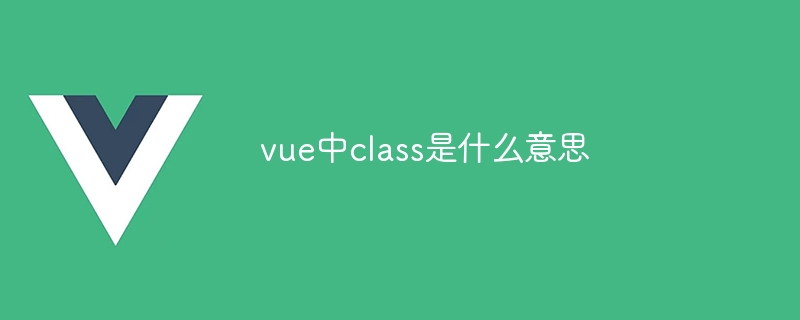
In Vue, class is an attribute used to dynamically control the CSS class of an element. Its syntax is { class: {...} }. It can dynamically control the application and removal of CSS classes through object binding key-value pairs, binding expressions, and binding arrays to implement complex style logic.

Vue class
What is it?
In Vue, class is an attribute used to dynamically set the CSS class of an element.
Its syntax:
<code>{
class: {...}
}</code>Its usage:
The class attribute receives an object as a parameter, and the object’s Key-value pairs represent CSS class names and Boolean values. If the boolean value is true, this CSS class will be applied to the element.
Example:
<code><div
:class="{
active: isActive,
error: hasError
}"
>
内容
</div></code>In this example:
isActive is true, then the active class will be applied to the element. hasError is true, the error class will be applied to the element. Dynamic binding:
The class attribute can be bound to JavaScript expressions to dynamically modify CSS classes. For example:
<code><div :class="{ 'error-message': error }">...</div></code>In this example, if error is true, the error-message class will be applied to the element.
Binding array:
class properties also support binding arrays. Each element in the array corresponds to a CSS class name. If the array element is true, this CSS class will be applied to the element.
Example:
<code><div :class="['active', 'error-message']">...</div></code>
In this example, the CSS classes of active and error-message will be applied to the element .
How to use class?
You can use the class attribute to:
The above is the detailed content of What does class mean in vue. For more information, please follow other related articles on the PHP Chinese website!